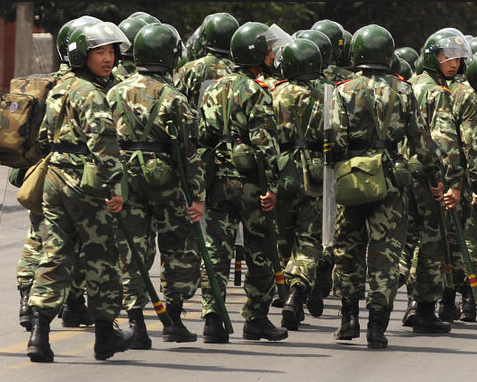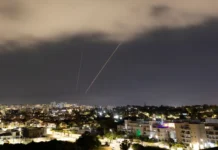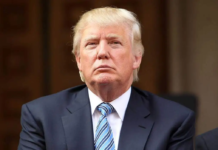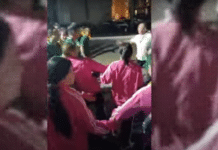140 killed and 800 injured in worst ethnic clashes for decades in China’s Muslim-majority region
“The casualty toll, if confirmed, would make this the deadliest outbreak of violence in China in many years,” writes the New York Times. Already, this represents the most serious outbreak of violence in Xinjiang since 1997 and threatens to eclipse the horrific death toll in Tibetan areas last year. A total clampdown is now in force in Ürümqi with martial law declared and telephone and internet services cut. Dozens of casualties, from both Han and Uighur communities, have been taken to city hospitals.
China Central Television (CCTV) showed footage of Uighur protesters attacking and kicking people on the ground. Other people sat dazed with blood pouring down their faces. As with the rioting in Lhasa, the Tibetan capital, in March 2008, such images will inflame anti-Uighur sentiment among sections of the Han Chinese who make up 92 percent of China’s population. Indeed, this is the intention of China’s ruling elite, who undoubtedly want to seize upon events in Ürümqi to create a welcome popular diversion from the deepening economic crisis and growing discontent that threatens to spoil the ruling ‘communist’ party’s celebration of 60 years in power this October. Typically, the central thrust of official propaganda is that the violence in Xinjiang was fomented from outside by exile groups – the message being that all Chinese should unite behind “their” government to protest against “foreign interference”.
No one should be fooled by this ‘spin’ on the events in Xinjiang. Reports at this stage are fragmentary, but the peaceful character of the initial protest in Ürümqi seems clear. Associated Press report that: “Accounts differed over what happened next in Xinjiang’s capital of Ürümqi, but the violence seemed to have started when a crowd of protesters – who started out peaceful – refused to disperse.” An American eyewitness was quoted by this agency saying that police pushed the protesters back with tear gas, fire hoses and batons, and protesters replied by knocking over police barriers and smashing bus windows. “Every time the police showed some force, the people would jump the barriers and get back on the street. It was like a cat-and-mouse sort of game,” he told AP.
Racist clash at Guangdong factory
The protest was held to demand answers from officialdom over an incident in Guangdong, southern China, on 26 June. A horrendous communal (ethnic) clash between Han Chinese and Uighur migrant workers at a toy factory in the city of Shaoguan resulted in two Uighurs being killed (although there are reports the number could be higher) and 118 injured from both ethnic groups. The incident was started by a Han Chinese worker who had lost his job at Early Light, a private company, that until recently employed over 50,000 workers in southern China. Rather than blaming the boss – Hong Kong’s ‘toy billionaire’ Francis Choi – this worker vented his anger on the 600 Uighur workers brought to the province as cheap labour (even cheaper than Han). This worker, who has since been arrested, circulated a false story on the internet claiming six Uighur men had raped two Han women at the factory. Gangs of Han workers attacked the Uighur dormitories with knives and metal bars and the Uighurs defended themselves with the same means – a bloodbath ensued.
This incident is highly symptomatic of processes in China, as tensions reach breaking point over unemployment (at a post-1949 record), pay cuts (200m migrants have been pitched into a new ‘race to the bottom’ competing for fewer and fewer factory jobs) and official corruption that penetrates almost every sphere of human activity. With all protest channels closed down and workers’ self-organisation outlawed, anger against the state is rising but so too is racism, crime, drug abuse, suicide, and other expressions of hopelessness. As a footnote on the Shaoguan incident, Choi, the billionaire toymaker, is officially worth US$1 billion and boasts a mansion with over 30 sports cars in its car park. The minimum wage set by Shaoguan’s government, which is the norm for most migrant workers, is just 500 yuan a month (approximately US$73). Such are the extremes of the ‘two Chinas’ today: A migrant worker would have to work for 261 years, not spending one fen (cent) of his wage, in order to buy one of Mr Choi’s Ferraris; yet such abysmally low wages are being fought over sometimes with tragic and bloody consequences.
The outbreak of street fighting in Ürümqi represents a ‘feedback loop’ from the clashes in Guangdong. Reports have circulated that police also took part in attacking the Uighur workers in Shaoguan, that several Uighurs despite being victims were among those arrested, and rumours that the mobile phones of Uighurs in Shaoguan had been confiscated to prevent them speaking out. Angered by these reports, and suspicious of another official cover up, a crowd of Uighurs went to the streets of Ürümqi to demand answers and protest against what is obvious discriminatory treatment.State racism
The Shaoguan incident, widely reported on the internet and even in official media, has undoubtedly aroused deep indignation among Uighurs who have seen millions of Han Chinese move into Xinjiang, dominating the growing private sector (the population of Ürümqi, 2.3m, is now 70% Han Chinese), while Uighurs who move to other parts of China face systemic discrimination and racism, are harassed by police and other authorities, and ostracised as ‘untrustworthy’ and ‘prone to violence’ by some layers of the Han Chinese population. Racist ideas in any society do not arise spontaneously from below, but are implanted and cultivated by rulers to further their own policy interests. So it was with the rise of antisemitism in Europe, and “white supremacist” ideology against Afro-Americans in the U.S. And so it has been for decades in China with official distrust of the Uighur minority and their stubborn adherence to their own language, culture and religion, which in the bureaucratic-mandarin mindset poses a threat to “national interests”.
These prejudices are much in evidence now in the official version of the Ürümqi events. The claim that exiled Uighur spokeswoman Rebiya Kadeer, based in the U.S., is behind the riot cannot be taken seriously. Xinjiang’s Governor Nuer Baikeli has stated that, “After the [Shaoguan] incident, the three forces [i.e. separatism, militant action, and religious extremism] abroad strived to beat this up and seized it as an opportunity to attack us, inciting street protests.”
This claim is no more plausible than the claims the Dalai Lama orchestrated the rioting in Tibet last year, at a time when he was pleading to be allowed to attend the Beijing Olympics, the target of an attempted boycott campaign by his own supporters. Similarly when Han Chinese and other groups of workers stage strikes and street protests, the regime routinely points to the “black hands” of radical intellectuals, human rights activists, leftists, or falun gong practitioners, who they allege must be behind such actions – as if workers are too stupid to struggle on their own account!
In Xinjiang, while support for independence runs deep among Uighurs and other minorities, this is not yet a universal trend, and in this particular case it does not seem to have been the motor force of the protests. Eyewitnesses report that some Uighur protesters carried the Chinese flag. This is quite logical given that the aim of their action was to secure basic rights and assurances for Uighurs working elsewhere in China, but also in the hope the flag would offer some protection against repression and precisely the sort of propaganda against “separatism” that is now raining down. Having spread from Guangdong to Xinjiang, there is now a very real danger of racist revenge attacks on Uighurs in other parts of China, aggravated by chauvinistic government propaganda to justify the crackdown.
Police fired shots
From what are still sketchy eyewitness accounts it seems the security forces, after issuing several warnings to clear the area, atacked the demonstrators with gas and reportedly also cattle-prods, thus transforming a peaceful if angry protest into the worst violence in more than a decade. Even without a full picture of events (which may never emerge) this scenario seems very plausible. Several witnesses reported hearing gunfire in the evening of 5 July, by which time the riot was in full swing. Why would a several hour-long sit-down protest suddenly and without provocation go on a rampage, especially in a city where Uighurs are the minority, and where police numbers are overwhelming? As the Times (UK) points out: “Ürümqi has for years been one of the most well-controlled cities in Xinjiang because of the high and rapidly growing population of Han and the large presence of security forces.”
Are the security forces capable of turning one of the “most well-controlled cities” into a bloodbath? To answer this question we only need to look at their record elsewhere in China, where heavy-handed policing is a well-known major cause of unrest and rioting. We can point to the Weng’an incident (Guizhou province) one year ago as an example, and the Shishou incident (Hubei province) last month as another. There are too many other examples to list here.
The ruling party’s influential Outlook News Weekly commented as recently as its 15 June issue: “Party officials must pay close attention to mass incidents without making mountains out of molehills and seeing them as colossal ‘political incidents.’ Treating these incidents as anti-government actions and subsequently suppressing them with strong force would be the precise method of exacerbating problems, and would have the direct result of aggravating the opposition between officials and civilians.”
This is not the first time central government organs have urged a sensitive approach, fearing that local protests can easily spin out of control because as the same article explains, “social contradictions have already formed certain foundations of society and the masses, creating a powder keg ready to explode at the first hint of a flame…” Yet despite these wiser counsels, so contradictory and unstable is the Octopus of the Chinese state that while the head may urge caution, its tentacles proceed to do the exact opposite, clinging to what they understand best: brute force. This seems to have been the trigger for the latest eruption in Xinjiang.
Socialism and working class unity
A riot by its very nature is a blind and destructive action, an act of desperation. It is not a method for achieving conscious political demands; it does not follow a democratically agreed structure (which is outlawed and therefore very difficult in China), and in conditions like those in Xinjiang this can easily boil over into attacks on innocent civilians targeted for their ethnicity. Socialists in no way support or advocate rioting as a means of political struggle, but neither do we join the chorus – led by the Chinese dictatorship – that puts the blame upon the Uighur protesters for this turn of events. The responsibility for what happened lies with the Beijing regime and its security forces, whose zero tolerance towards public protests and any form of independent action and thought is creating social explosions all over China. This is exactly as socialists warned. One year ago, we warned on chinaworker.info: “Beneath this surface ‘calm’, however, Xinjiang remains a time bomb…” [The national question in Xinjiang, chinaworker.info, 15 January 2008]
Socialists are completely opposed to the Chinese regime’s policies in Xinjiang and the repression now underway in Ürümqi. The Chinese state acts in Xinjiang in the same way it acts over incidents of unrest elsewhere: to defend the interests of the moneyed elite and the untrammeled rule of the current dictatorship. An independent non-government enquiry should be established to look into the events of 5 July and 26 June, including representatives of the Uighur community chosen by themselves. Working class unity over religious and ethnic lines represents the only way out of this crisis. Full democratic rights, including an end to linguistic and ethnic discrimination at school and work, and the right of self-determination for national minorities, are an indispensable part of this struggle. Building a new socialist labour movement, based upon the bedrock of independent trade unions that organise all workers regardless of nationality, sex, religious beliefs, and hukou status, is the urgent task of our time.
For a Socialist Xinjiang and a Socialist China
From the book ‘China – Sweatshop of the World’ by Vincent Kolo and Chen Lizhi (available from chinaworker.info). This is an excerpt from the chapter on Xinjiang:
At this stage, it is not certain that a majority of Uighurs want outright independence. Despite the extremely lop-sided effects of today’s economic growth, it is clear that Xinjiang benefits from economic integration with the rest of China, and there is an understandable fear even among Uighurs that an independent state of East Turkestan could suffer lost jobs and investments. However, if the majority opted for independence, socialists would support this, but with the slogan of an “independent democratic socialist East Turkestan”, explaining that the grip of the Beijing regime (and the capitalist elites in Central Asia who also oppose independence), can only be broken by a successful socialist revolution on an all-China and all-Asia basis.
Only by linking their struggle, in other words, with a mass revolutionary movement of the working class in China and internationally, with the aim of ending capitalism and despotism, can the national oppression of the Uighur people be overcome. On the basis of a democratic workers’ and poor peasants’ government, the people of Xinjiang/East Turkestan would be free to decide what their relationship should be with the Chinese state, whether independence (with democratic guarantees including the right to autonomy or separation for the Han majority regions), or for genuine autonomy within a unified state. This would include the possibility of a wider socialist federation – on a democratic and voluntary basis – of China, Central Asia and Russia, opening boundless possibilities for the development of the massive economic potential of Eurasia.
On the basis of capitalism and imperialism, the national conflict in Xinjiang and the wider region is insoluble. This is why Marxists refuse to give any support to the existing nationalist parties and groupings – secular or religious – none of which put forward an alternative to capitalism and therefore, regardless of their stated aims, stand not for the abolition of oppression and poverty, but only for changing the national-state forms of this oppression. But we are completely opposed to the suppression of nationalist or religious organisations by the Chinese state and support their right to operate legally, just as we call for full democratic rights: freedom of political activity, freedom of worship, right of assembly, a free press etc. We defend the national and cultural rights of Uighurs and other minorities, including the right to use their own language in dealing with the state, equal status for minority languages in the school system and an end to all forms of discrimination in respect of jobs, housing and public services.
The working class in Xinjiang, and elsewhere, must organise independently of all capitalist political formations. To liberate itself it must forge links with the workers of other nations and other provinces of China. The Han Chinese working class must also embrace the struggle against national and religious oppression in Xinjiang as its own struggle. Xinjiang has become a training ground for the latest techniques in state repression and ‘anti-terrorism’ that will be used against all those who stand up to the dictatorial CCP regime: striking workers, anti-pollution activists, pro-democracy activists and socialists. Only by building a united working class movement, within which members of the oppressed national minorities will play a crucial role, can capitalism, authoritarianism and national oppression be consigned to the history books.




